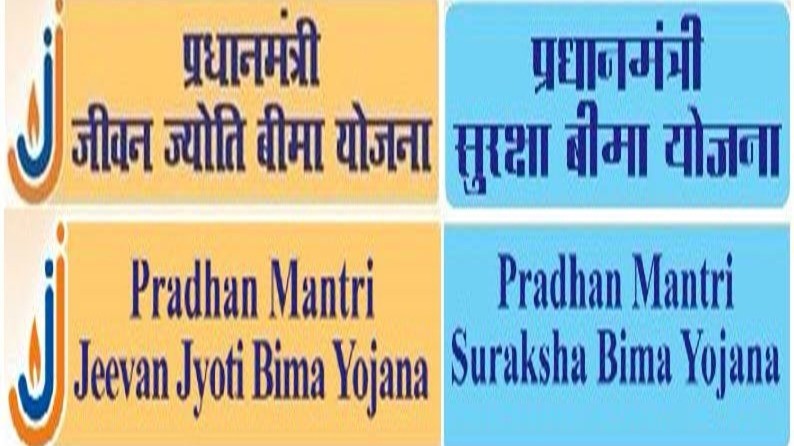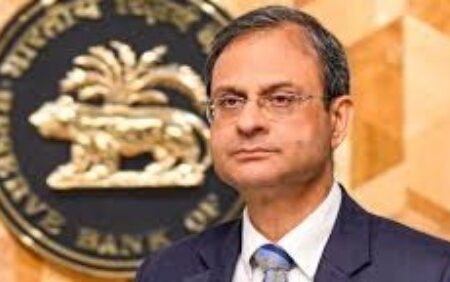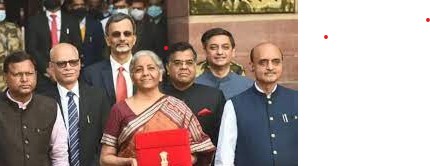We are all aware of the phenomenon of mis-selling of insurance and mutual fund products at bank branches across India. Some banks are more aggressive in this respect than others. A few relationship managers are more target-driven than their peers. On social media, we often come across videos of bosses abusing branch bankers for missing targets.
This is, however, only one side of the story. There’s another, where the sufferers are mostly poor people — those who form the bottom of the pyramid.
Two insurance products involved here are the Pradhan Mantri Jeevan Jyoti Bima Yojana (PMJJBY) and the Pradhan Mantri Suraksha Bima Yojana (PMSBY). Most customers are not aware of what they are buying and why.
PMJJBY is a life insurance scheme that offers a one-year term life cover, renewable annually, with an assured sum of Rs 2 lakh for death due to any reason. The coverage period is one year, renewable annually, and the premium is Rs 436. Initially, it had been Rs 330 but was raised in June 2022.
PMSBY is a government-backed accident insurance scheme, which offers accidental death and disability cover to individuals aged between 18 and 70, at a premium of Rs 20 per annum. It offers an assured sum of Rs 2 lakh for accidental death, or total and irrecoverable loss of both eyes or hands/feet, and Rs 1 lakh for partial disability.
Both PMJJBY and PMSBY have been in force for over a decade now. They were announced in the 2015 Union Budget by then finance minister Arun Jaitley and were launched by Prime Minister Narendra Modi on May 9, 2015 in Kolkata.
All savings bank account holders aged 18-50 are eligible for both. The premium is debited automatically from the subscribers’ accounts. This is one of the contributing factors to the problem. More on this later.
The subscribers of both insurance schemes, or their beneficiaries, are primarily Pradhan Mantri Jan Dhan Yojana (PMJDY) account holders. As of April 16, there are 551.7 million PMJDY account holders, who keep Rs 2.61 trillion with the banking system. Of these, 428 million accounts are with public sector banks (PSBs), followed by regional rural banks (103.8 million), private banks (18 million) and rural cooperative banks (190,000).
PMJDY, the most ambitious financial inclusion programme globally, was launched on August 28, 2014. Modi announced the scheme in his first Independence Day speech on August 15, 2014. On the inaugural day, 15 million bank accounts were opened.
The Guinness Book of World Records recognised this achievement, saying, “The most bank accounts opened in one week as a part of the financial inclusion campaign is 18,096,130 and was achieved by the Government of India from August 23 to 29, 2014.”
PMJDY ensures universal access to banking facilities with at least one basic banking account for every household, financial literacy, access to credit, insurance and pension facility. All government benefits are channelled through these accounts as direct benefit transfer, or DBT.
Initiated by the government in 2013, the DBT architecture aims at transferring government subsidies and benefits directly into the beneficiaries’ bank accounts, enhancing efficiency, transparency, and accountability in government programmes by eliminating intermediaries and reducing potential leakages.
In May 2023, on the eighth anniversary of PMJJBY and PMSBY, Finance Minister Nirmala Sitharaman had said that 162 million and 342 million enrolments had been done under PMJJBY and PMSBY, respectively, till April 26, 2023. The PMJJBY scheme has provided crucial support to 664,000 families who have received claims worth Rs 13,290 crore, and under the PMSBY scheme, at least 115,000 families have received claims worth Rs 2,302 crore.
More recent data shows that 344.8 million account holders have been covered by PMJJBY. The government aims to add 40.7 million more under PMJJBY, and another 63.4 million under PMSBY.
By the end of February, 927,980 claims had been cumulatively received for PMJJBY. Of these, 895,477 have been settled, and Rs 17,910 crore disbursed. For PMSBY, the claims stood at 203,667; settlements 153,108; and money disbursed Rs 304,053.
So, the claim-settlement ratio is pretty high. Right? But these figures don’t tell the real story.
While bankers showcase the success of both the schemes, the ground reality is different. Millions of people do not make claims since they don’t know they are covered by such schemes. They also don’t know why the money is deducted from their accounts.
There is a fundamental flaw in the implementation of the schemes. In isolation, the enrolment figures reflect neither the accessibility nor the impact. Driven by government pressure to achieve targets, banks are mis-selling both the products.
The key to the success of such welfare schemes is execution. Here the system has failed. Most policy-holders don’t know they are insured. They are unaware of such schemes. Banks typically mass upload customer data at the backend, and the premiums are automatically deducted — without keeping the policy-holders informed.
Since most of the insured individuals and their families are not aware of the coverage, they don’t make any claim. Also, those who have multiple bank accounts often face multiple deductions for the same policy. And, believe you me, there have been instances where even high net worth individuals in urban India find that PMJJBY and PMSBY premiums have been deducted from their deposits!
For those who attempt to make claims, the process is far from easy. Instead of adopting an empathic approach towards the economically disadvantaged, the claims are often rejected because of minor documentation issues. Instead of handholding them, rural bank branches often leave the not-so-literate beneficiaries to navigate complex paperwork alone.
Why can’t both the schemes follow the Pradhan Mantri Fasal Bima Yojana example? Launched in February 2016, it’s an insurance service for farmers’ yields. Whenever a flood or drought hits a region, banks automatically take care of the farmers’ insurance cover. Similarly, whenever a death or accident is reported, banks can on their own send the money to the account/s of the family affected.
While genuine claimants struggle, fraudsters have found ways to exploit the loopholes in the system. There have been media reports on mass enrolment of deceased individuals for making claims. Such instances make the insurance companies wary and slow the claim-settlement process.
The State Bank of India has offered the PMJJBY scheme to over 40 million account holders; SBI Life Insurance Company Ltd is its insurance partner. Punjab National Bank, Indian Bank, Indian Overseas Bank, Uco Bank, Bank of Maharashtra, and Punjab & Sind Bank have Life Insurance Corporation of India (LIC) as their insurance partner.
For PMSBY, National Insurance Company Ltd, New India Assurance Company and United India Assurance Company are the dominant partners of the banks.
A close look at the numbers shows that at least 95 per cent of PMJJBY policies are offered by LIC. Private insurers have largely stayed away. The key question is: Do these schemes genuinely benefit people or are they merely enrolment statistics on government reports?
Indeed, both schemes were conceived to protect low-income families from financial crisis. However, if awareness remains low, frauds persist and genuine claims continue to be rejected, these initiatives will just be a statistical success with no real impact on the ground.
The only way to salvage the situation is by embracing reforms without wasting time. It’s not a difficult task. Here’s what can be done:
# Banks and their insurance partners must educate policy-holders and their families about the benefits and claims procedures.
# Make the claim settlements process faster and transparent.
# Implement artificial intelligence (AI)-driven verification and cross-checking to detect fraudulent enrolments.
# Encourage private sector participation to make the turf competitive, and enhance efficiency and service quality.
# Finally, by leveraging AI, the banks can ensure that when a casualty occurs, the claim is processed automatically, and the amount is credited directly to the beneficiaries’ account.
Currently, technology is used only to deduct the premium, with the beneficiaries often not knowing why their money has been deducted. What prevents the banks from using technology to tell them why, and ensure they get the cover when they need it?
This column first appeared in the Business Standard.
The writer, an author and Consulting Editor, Business Standard, is also senior advisor to Jana Small Finance Bank Ltd.
His latest book: Roller Coaster: An Affair with Banking.
To read his previous columns, log on to www.bankerstrust.in. X: @TamalBandyo



